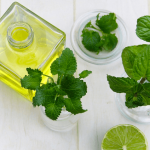By Anshu Vyas Seetharaman
COVID-19 has brought spirituality back into our lives, and yoga is one such form. Pranayama is made of two words: ‘Prana’ and ‘ayama’. Prana is the life force; it is more than just the breath. Ayama is to regulate. Pranayama means to regulate breathing, which is the life force. It is even said that the life force travels to us on the breath. In a normal breath, we take in about 500 ml of air. When we learn to breathe deep, we can inhale 5000-8000 ml in a couple of breathing cycles. More air means more availability of oxygen. A session of Pranayama will certainly leave you energized.
Detox your body
Pranayama helps you to detox the system and aid digestion, leading to weight gain or weight loss as per the body’s needs. It also helps you to balance the endocrine system leading to better management of lifestyle diseases, such as thyroid, diabetes, PCOS (polycystic ovary syndrome), and Irregular growth hormones. We have a series of different pranayamas to improve our immunity, lung capacity, metabolism, sleep cycles and insomnia, increase/ reduce body temperature, respiratory disorders, hypertension, heart disease, migraine, reproductive health, elimination cycle and circulation. Pranayama energises the brain and each and every cell of the body.
Mind, body and soul connect
Our breath is quite subtle. Pranayama helps us to understand our breath and the awareness of the in-breath and the out-breath. The breath is an important tool for meditation. As the breath is connected to the mind, Pranayama helps us to deal with stress and stressful situations. Regular practice of Pranayama helps us to improve lung capacity and improve immunity. Regularity is important. Pranayama helps us to harmonise our mind-body and soul connect. As per the Hatha Yoga Pradipika, the mind is the king of the senses. The breath is the king of the mind.
Pranayama in brief
The incoming breath is referred to as Purak (in Sanskrit). The outgoing breath as Rechak, while the retention of breath is Kumbhak. This retention can be done inside the body after an inhalation (before an exhalation) or outside the body after an exhalation (before the next inhalation).
There are several types of pranayama and several breathing ratios to learn and master. It is advised to learn from a certified yoga practitioner. Devoting 10-15 minutes every day is a good time to devote to pranayama and it is a wonderful prelude to meditation. In the video above, I have covered 11 basic pranayamas for you to learn and practice. Make the most of it and get fit in these pandemic times.
Anshu Vyas Seetharaman is a resident of Ulsoor and an internationally-certified trainer from Yoga Alliance. She runs a YouTube channel on yoga and also conducts online yoga classes for individuals and corporates.




